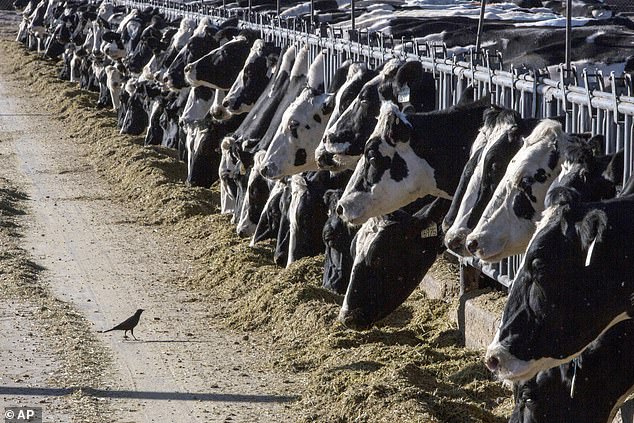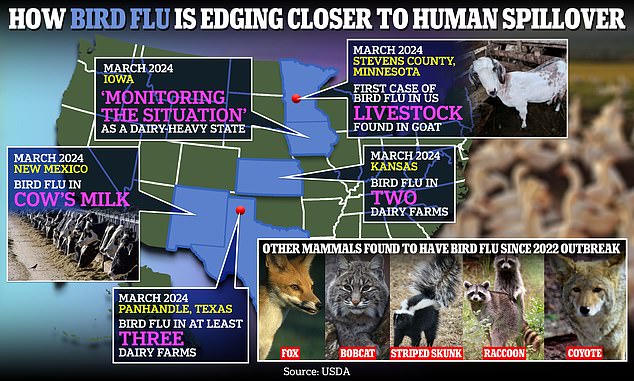<!–
<!–
<!– <!–
<!–
<!–
<!–
A person in Texas has tested positive for bird flu, officials confirmed, amid alarm over the disease’s spread to humans.
The patient, who has not been identified, worked on a dairy farm in the state and had contact with cows infected with the virus.
The individual suffers from eye inflammation, his only symptom, and has already been isolated and treated with a flu antiviral.
Officials say the risk of bird flu to the general public remains low, although the case has alarmed experts, who fear that in a worst-case scenario the disease could spread to humans and then begin to spread among them. .
There are also no concerns about the safety of commercial milk at this time, officials say, because milk is pasteurized, which inactivates viruses and bacteria.

Person in Texas infected with bird flu (livestock, file image)


Testing revealed that an unknown number of cows tested positive for H5N1 Avian Influenza A in Texas, Kansas and New Mexico. Iowa is currently “monitoring the situation” as it is also a large dairy producing state. It comes after a goat in Minnesota tested positive last week. Avian flu has also been found in foxes, lynx, striped skunks, raccoons and coyotes since the 2022 outbreak.
They add that milk from sick animals is also diverted and destroyed to ensure it never enters the human supply chain.
The case comes after an inmate working on a farm in Colorado also tested positive for bird flu in 2022.
The unnamed individual, who was under 40 years old, had been working with poultry before he was diagnosed with the infection. He recovered and his only symptom was “fatigue for a few days.”
Both patients were infected with the H5N1 strain of bird flu.
Dr. Bill Schaffner, an infectious disease expert at Vanderbilt University in Tennessee, told DailyMail.com he was not overly concerned about the case.
“On rare occasions, these bird flu viruses can become established (in animals other than birds) and cause infections,” he said.
“This happens periodically with humans, but person-to-person transmission rarely occurs.
“The genetic part of the virus that would allow it to be easily transmitted from person to person is still missing.”
The CDC said in its statement: “This infection does not change the human health risk assessment of H5N1 avian influenza for the US general public, which CDC considers low.”
“However, people with close or prolonged unprotected exposures to infected birds or other animals (including livestock), or to environments contaminated by infected birds or other animals, are at increased risk of infection.”
